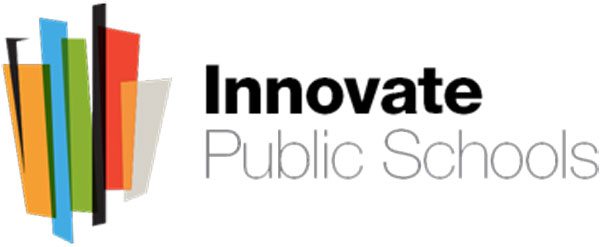
January 2, 2018; Los Angeles Times
A young nonprofit organization, Innovate Public Schools (IPS), is challenging San Francisco’s Public Schools to more aggressively address the persistent gap between students of color and their white peers. Its efforts have placed the Bay Area front and center in the national debate over the gap’s causes and how best to eliminate it.
In October, IPS partnered with local NAACP leaders to challenge the city’s educational leadership. Thomas Maffai, Senior Research and Policy Lead at IPS, used data developed by IPS to show that city schools were not as effective as other schools in California in closing the gap. He told the Bay City Beacon,
We compared San Francisco to the most similar districts across the state, districts serving similar numbers and demographics, and what we find across the board in both math and English is that San Francisco is near the bottom of the list for both African American and [Latinx] students…We see this not only as a district problem but [as] one for the entire city…we want our school system to be preparing students to access that economy, those high-paying jobs. Instead, we’re seeing students who are falling behind early, and they’re never able to catch up by the time it comes to graduation [and entering college]…[this] really brings into question the identity of who we are as a city.
Rev. Amos C. Brown, San Francisco’s NAACP branch president, told the Los Angeles Times that “Black students have been underachievers. They’re living in toxic situations. It’s amazing they’ve done as well as they have done, but it’s criminal that sophisticated children in progressive San Francisco are performing at these levels.” Brown said it was time for the district to declare a state of emergency and take bold steps to change this picture.
IPS was formed in 2012 “to build the parent and community demand for world-class public schools, and to accelerate the growth of these schools, particularly for low-income students and students of color.” With seed funding from the Walton Family Foundation and ongoing funding from other school choice supporters (including Michael Bloomberg), it is not surprising that their solution is to stop trying to “fix” existing low performing schools and instead direct resources and energy toward the creation of new, high performing schools, many if not all of which will be charter schools.
As covered in another story today and ongoing NPQ coverage over the years, there is a significant and well-financed national strategy to privatize public education. Nonprofits with words like “great schools” and “excellent schools” in their names and purporting to engage parents are the tip of the iceberg. Often times, these nonprofits target parents of color, who are desperate for better education for their children.
Sign up for our free newsletters
Subscribe to NPQ's newsletters to have our top stories delivered directly to your inbox.
By signing up, you agree to our privacy policy and terms of use, and to receive messages from NPQ and our partners.
Using the data in their study as the focal point, IPS has been organizing parents to join them in advocating to support their call to action, opening new and better schools, preferably charters. While San Francisco parents can already choose their children’s schools, IPS believes that educational inequality stems from the paucity of quality schools that are geographically inaccessible to minority and low-income students, making choice an ineffective response.
San Francisco needs schools that change lives and enable children to advance, that build a foundation for permanence and an anchor for neighborhoods…The majority of charter schools have notably better academic results for low-income [Latinx] and low-income African American students. Many of these schools are providing better options to families who don’t have many.
[…]
While low-income families struggle to find secure, high-quality schools for their children, San Francisco’s wealthy families have abandoned the public schools…This calls San Francisco’s leaders at every level and across multiple sectors to act with new urgency for the education of our underserved children. That means listening, changing policy, reconsidering past answers that have amounted to “no”—no to new schools, no to bolder forms of school turnaround, and no to new effective ideas.
IPS is right to describe the achievement gap as a critical problem. But in apparently focusing on schools as the solution, they are missing, as do most school choice advocates, the bigger picture. Their approach ignores system-wide challenges and larger societal issues that affect educational outcomes and will challenge new schools as well. San Francisco Public Schools have been investing in small schools, keeping class sizes small, maintaining social workers, and pumping up preschool programs as part of a comprehensive approach to school improvement. But with the funding limitations common to public schools, the budget has been balanced by keeping teacher salaries low. The result is high turnover, which harms educational quality.
Finding enough money to avoid the choice between teachers and other system improvements is important but goes unaddressed by IPS’s recommendations. Vincent Matthews, San Francisco Unified School District’s superintendent since last May, told the Beacon that they also do not address “the interplay of education with housing security, community safety, and the physical and emotional wellbeing of students,” all factors critical to academic success.
Superintendent Matthews believes IPS’s agenda will move his district in the wrong direction. According to the Los Angeles Times, Matthews wants to “attack the achievement gap by improving the quality of his workforce, making sure teachers can serve different types of learners within the same classroom and ensuring students and teachers see achievement as something that can grow, rather than a fixed quantity…keeping a close eye on schools that appear successful but fail specific groups of students.”
The charter school movement wants to characterize the racial achievement gap as a school and teacher problem. But the problem is poverty. Parental income is the biggest indicator of a student’s educational outcomes.—Martin Levine













